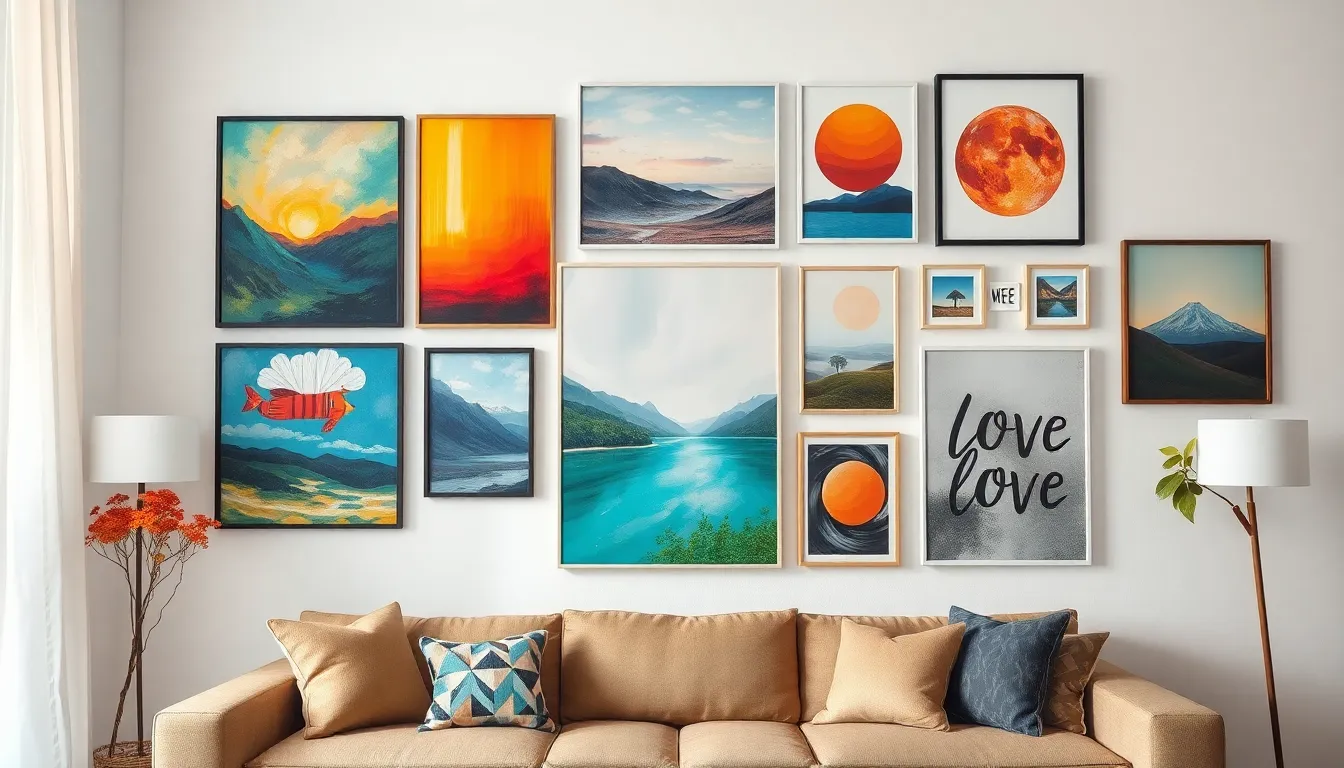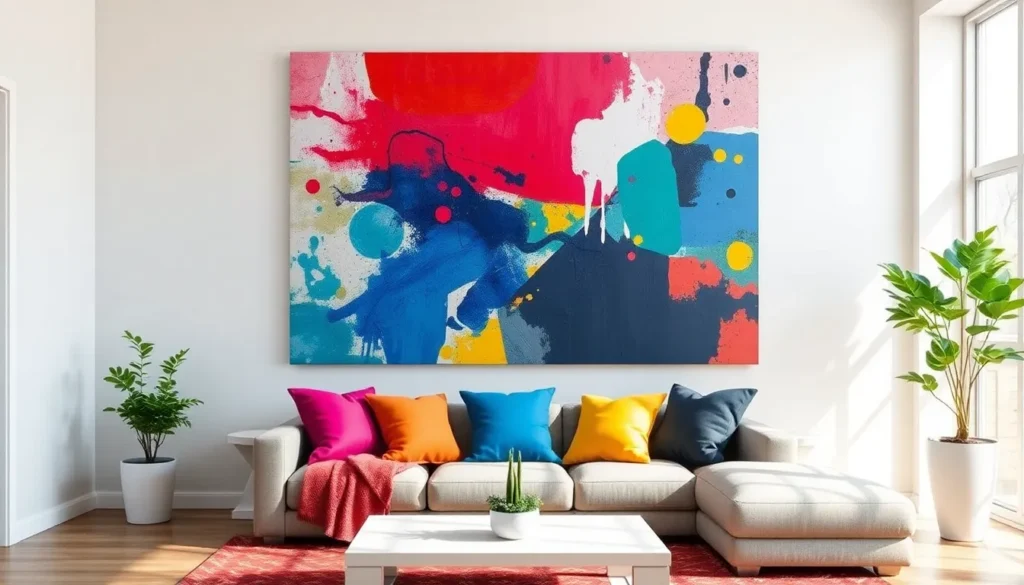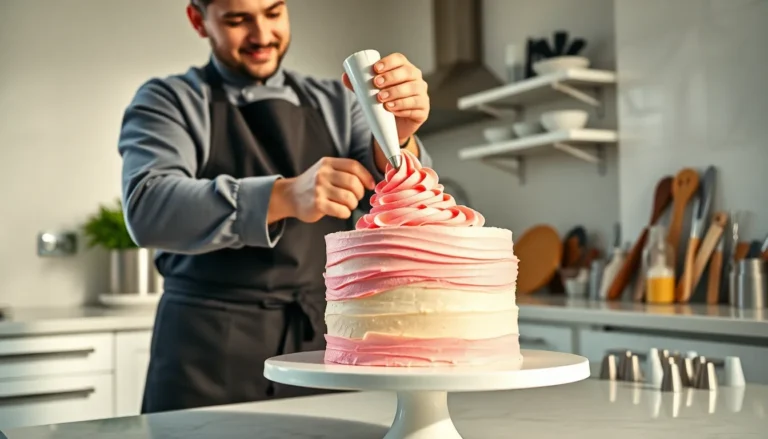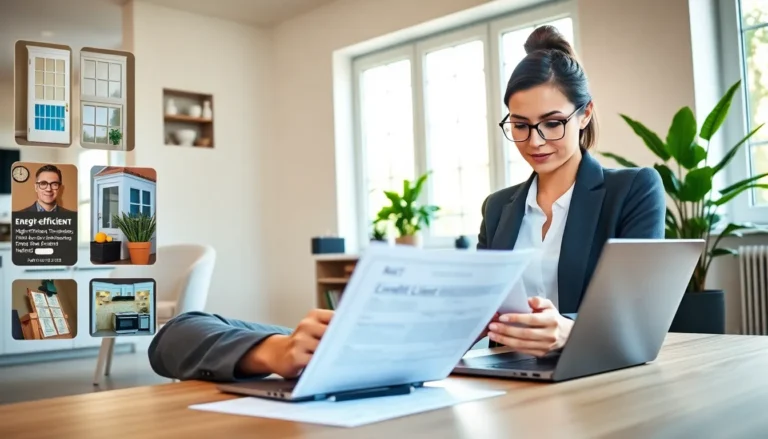Table of Contents
ToggleTransforming a space can be as simple as adding a splash of creativity to the walls. Creative wall art not only enhances the aesthetic appeal of a room but also reflects personal style and character. From bold murals to intricate canvases, the options are endless, allowing anyone to express their individuality through art.
In today’s world, where home environments are more important than ever, wall art serves as a powerful tool for self-expression. It can evoke emotions, inspire conversations, and even influence mood. Whether it’s a cozy living room or a vibrant office, the right piece of wall art can turn an ordinary space into an extraordinary one, making it an essential element in any interior design plan.
Overview of Creative Wall Art
Creative wall art encompasses various forms, including paintings, prints, murals, and sculptures. These art forms serve multiple purposes, from enhancing visual intrigue to conveying messages or themes.
Wall art has the ability to transform mundane spaces into vibrant environments. Artistic expressions reflect individual preferences and cultural influences, allowing for personal narratives to emerge through visual storytelling.
Different styles exist within creative wall art, catering to diverse tastes. Here are several popular types:
- Paintings: Traditional or contemporary, paintings add character and depth.
- Prints: Affordable reproductions allow access to famous and emerging artists.
- Murals: Large-scale artworks dramatically change the atmosphere of a room.
- Photography: Captured moments convey emotion and convey a personal perspective.
- Mixed Media: Combining various materials creates unique, textured pieces.
Choosing the right piece of wall art requires consideration of size, color, and theme. Proper selection ensures that the art complements existing decor while elevating the overall aesthetic. Whether placed in a living room, office, or gallery, creative wall art acts as a focal point, drawing attention and sparking engagement.
Types of Creative Wall Art

Creative wall art comes in various forms, each offering unique ways to enhance visual appeal and express individual style. Here are some popular types of creative wall art.
Abstract Art
Abstract art features non-representational forms, colors, and shapes, allowing personal interpretation. This art style can evoke emotions and provoke thought, making it an excellent choice for modern spaces. Artists often use bold colors and dynamic compositions to create impactful pieces, enhancing visual interest in any setting. Popular examples include canvas paintings and mixed media artworks that challenge traditional aesthetics.
Nature-Inspired Art
Nature-inspired art draws influence from the environment, showcasing landscapes, floral designs, and wildlife. This type of art can bring tranquility and a sense of calm to a space, making it suitable for living areas or offices. Artists often capture natural beauty through various mediums, including photography, paintings, and prints. Botanical illustrations or serene landscapes can significantly enhance an interior’s atmosphere, inviting the outdoors inside.
Typography Art
Typography art emphasizes the use of text and fonts to convey messages or explore phrases. This art form serves both decorative and communicative purposes, making it popular in contemporary design. Inspirational quotes, song lyrics, or playful phrases often appear in stylish typographic designs, adding personality to walls. Artists utilize various materials, such as wood, metal, and canvas, to create visually striking pieces that complement any decor style.
Techniques for Creating Wall Art
Various techniques exist for creating unique wall art, each enhancing creativity and personal expression. Artists utilize diverse methods to transform blank walls into captivating focal points.
Painting Techniques
Painting techniques play a vital role in wall art creation. Some popular methods include:
- Acrylic pouring: This involves mixing acrylic paints with a pouring medium, allowing for fluid movement across the canvas. The unpredictability creates mesmerizing patterns.
- Stenciling: This method uses stencils to reproduce images or designs, ensuring precision and uniformity. Stencils can range from intricate patterns to bold lettering.
- Sponging: This technique utilizes a sponge to apply paint, creating textured effects. It works well for subtle backgrounds or creating dimension in artwork.
- Watercolor layering: Artists apply multiple layers of watercolor to build depth and intensity. This technique produces soft, ethereal looks suitable for botanical or landscape art.
Mixed Media Approaches
Mixed media approaches combine different materials and techniques to produce dynamic wall art. Some notable methods include:
- Collage: This involves assembling various materials, such as paper, fabric, and photographs, onto a surface. The combination creates visual interest and adds depth.
- Textural elements: Artists incorporate materials like wood, metal, or fabric into their art, enhancing tactile experience. These elements capture light and draw attention.
- Digital prints: Artists utilize digital tools to manipulate images and designs, then print them onto canvas or paper. This method allows for high-quality, detailed work.
- 3D applications: Incorporating three-dimensional objects into artwork adds dimension and intrigue. Found objects or sculptural elements lend a unique, custom touch to wall art.
Benefits of Adding Wall Art to Your Space
Adding wall art to a space enhances decor and creates a dynamic atmosphere. Wall art serves as a focal point, drawing attention and providing visual interest.
Engagement increases with well-selected pieces. Wall art can evoke emotional connections, sparking conversations among guests or family members. It reflects individual tastes and acts as a personal signature in any environment.
Color diversity offered by wall art contributes to mood enhancement. Bright colors can energize an area, while softer hues instill calmness. This careful selection allows for tailored ambiance in living rooms, offices, or even kitchens.
Art on walls also adds depth and dimension. Textured pieces, such as sculptures or mixed media, break the monotony of flat surfaces. This dimensionality brings an element of surprise, transforming ordinary spaces into extraordinary environments.
Wall art promotes creativity and inspiration. Engaging visuals stimulate thought and can serve as daily motivation. Whether it’s a bold abstract piece or an inspiring quote, art can foster an innovative mindset.
Customization options support personal expression. Artists and designers offer a wide array of styles, sizes, and themes, ensuring that anyone can find a piece that aligns with their vision. Customized wall art, tailored to personal stories or experiences, makes a space feel unique.
Finally, wall art increases property value. Unique, high-quality pieces attract potential buyers by enhancing overall aesthetics. Well-decorated spaces resonate emotionally, leaving lasting impressions that can influence purchasing decisions.
Incorporating wall art provides multifaceted benefits that elevate any space while ensuring personal expression and increased ambiance.
Creative wall art is more than just decoration; it’s a vital element that shapes the atmosphere of any space. By thoughtfully selecting pieces that resonate with personal style, individuals can create environments that inspire and evoke emotions. The diverse range of art forms and techniques available allows for endless possibilities in customization and expression.
Whether it’s a striking mural or a subtle print, wall art has the power to transform ordinary walls into captivating focal points. As it enhances aesthetics and reflects individual tastes, it also contributes to the overall ambiance of a room. Embracing creative wall art is an opportunity to not only beautify a space but also to make a lasting statement about who they are.





